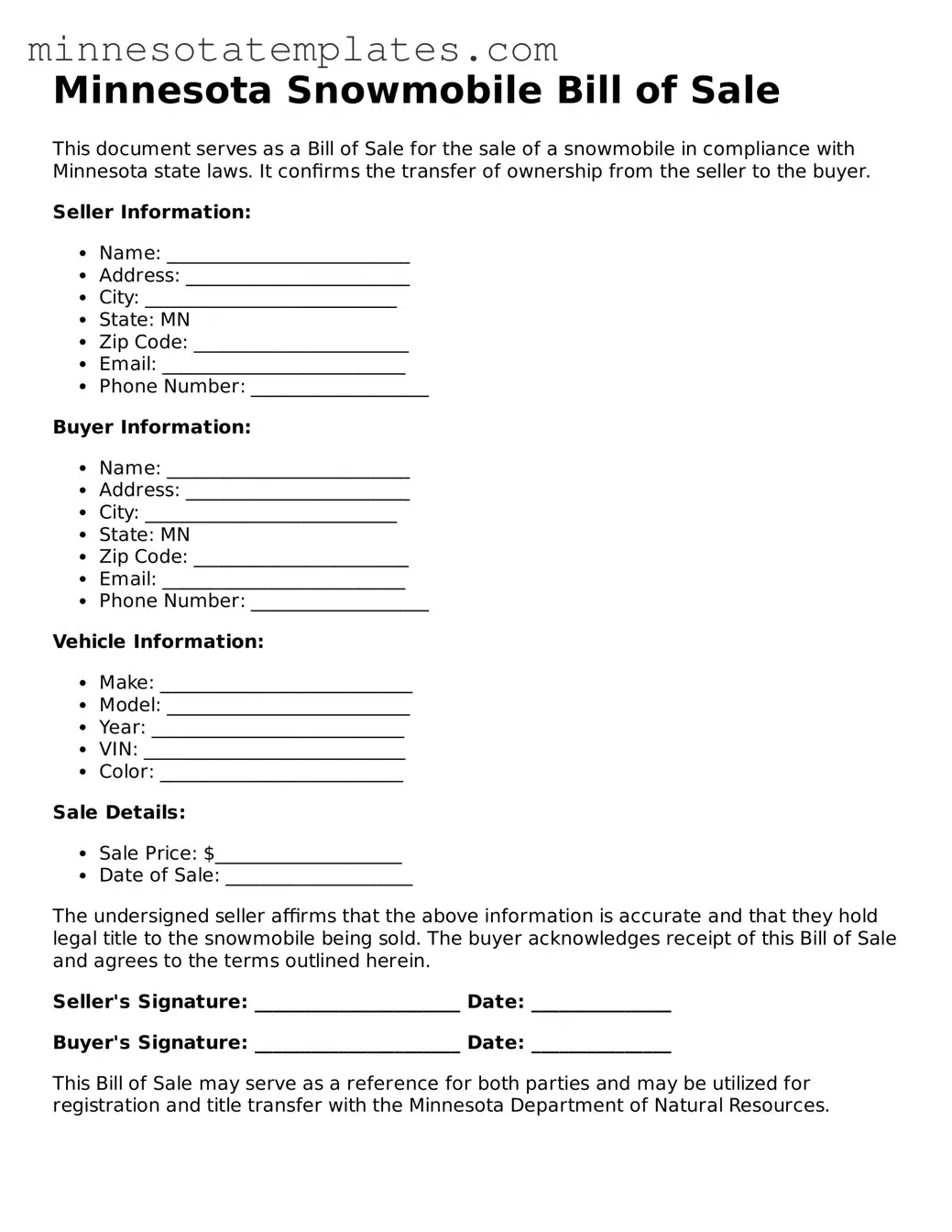Valid Snowmobile Bill of Sale Form for the State of Minnesota
The Minnesota Snowmobile Bill of Sale form serves as a crucial document for the transfer of ownership of a snowmobile in the state of Minnesota. This form not only provides essential details about the transaction but also protects the rights of both the buyer and the seller. Understanding its components is key to ensuring a smooth and legally sound transfer; start by filling out the form by clicking the button below.
Access Your Form Now
